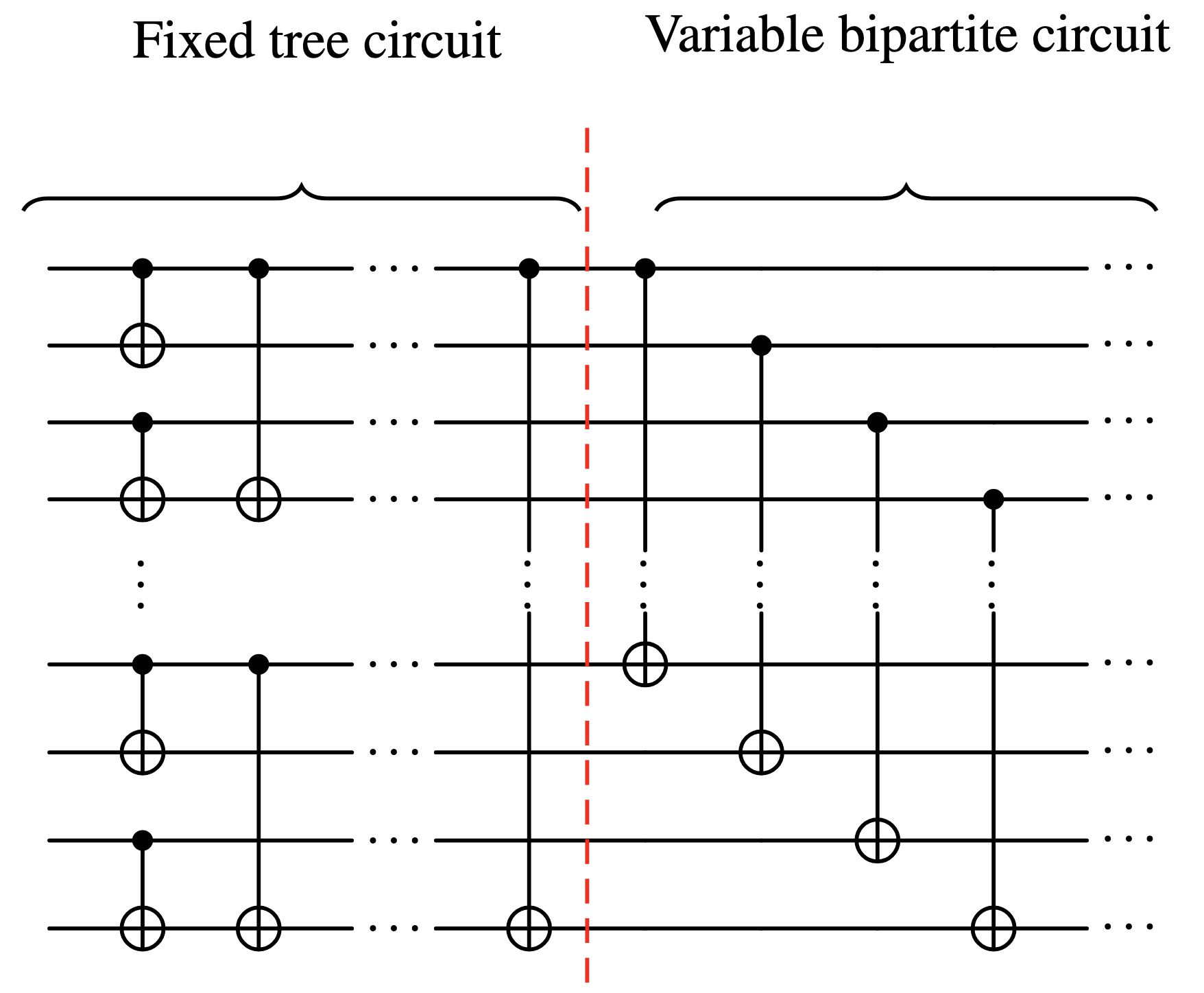99.2. Lower bound on the number of patterns
Let be the number of port graphs of width , depth and maximum degree . We can lower bound
assuming .
In the regime of interest, is small, so the assumption is not a restriction.
Proof
Let and be integers. We wish to lower bound the number of port graphs of depth , width and maximum degree . It is sufficient to consider a restricted subset of such port graphs, whose size can be easily lower bounded. We will count a subset of CX quantum circuits, i.e. circuits with only gates, a two-qubit non-symmetric gate. Because we are using a single gate type, this is equivalent to counting a subset of port graphs with vertices of degree 4. Assume w.l.o.g that is a power of two. We consider CX circuits constructed from two circuits with qubits composed in sequence:
- Fixed tree circuit: A -depth circuit that connects qubits pairwise in such a way that the resulting port graph is connected. We fix such a tree-like circuit and use the same circuit for all CX circuits. We can use this common structure to fix an ordering of the qubits, that refer to as qubits .
- Bipartite circuit: A CX circuit of depth with exactly CX gates, each gate acting on a qubit and a qubit .
The following circuit illustrates the construction:

All that remains is to count the number of such bipartite circuits. Every slice of depth 1 must have CX gates acting on distinct qubits. Every qubit to must interact with one of the qubits to , so there are such depth 1 slices. Repeating this depth 1 construction times and using Sterling’s approximation, we obtain a lower bound for the number of port graphs of depth , width and maximum degree at least 4:
where we used to obtain in the last step.